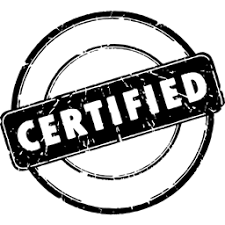 Community development research is a vital component of creating sustainable and thriving societies, but the impact of such research is often heavily influenced by how it is presented and formatted. The need for clear, concise, and well-organized projects is something to keep in your mind always. To address this crucial aspect, our services have emerged as valuable resources, offering strategies to structure and present research effectively. Community development study encompasses a wide range of topics, from urban planning and social welfare to environmental sustainability and economic empowerment. The diversity of these subjects demands an equally diverse approach to formatting. We recognize that each project is unique, requiring tailored strategies that suit its specific goals, audience, and context. As such, the strategies for formatting community development projects correctly are multifaceted and adaptable. The importance of accessibility and readability in community dev research cannot be emphasized enough. Community stakeholders, policymakers, and the general public should be able to comprehend and engage with the research findings easily. Our experts strive to ensure that complex data, statistical analyses, and qualitative insights are presented in a manner that is accessible to all, fostering inclusivity and informed decision-making within the community. Research on such an area often involves collaboration among multiple stakeholders, including academics, practitioners, and community members. Effective formatting serves as a bridge that enables these diverse groups to communicate and understand one another's contributions. It encourages transparency and shared ownership of the research process, promoting a sense of collective responsibility for the development of the community. The presentation of research has evolved beyond traditional reports and academic papers. Our project designing services also embrace multimedia and interactive formats that enhance engagement and dissemination. Utilizing technology to its fullest extent, we incorporate videos, infographics, interactive maps, and web platforms to convey research findings in engaging and memorable ways. Our formatting assistance is essential in ensuring that the valuable insights generated through research have a meaningful impact on the communities they aim to serve. Our experts empower researchers to present their findings effectively, promoting accessibility, collaboration, and innovation in the field of community development.
Community development research is a vital component of creating sustainable and thriving societies, but the impact of such research is often heavily influenced by how it is presented and formatted. The need for clear, concise, and well-organized projects is something to keep in your mind always. To address this crucial aspect, our services have emerged as valuable resources, offering strategies to structure and present research effectively. Community development study encompasses a wide range of topics, from urban planning and social welfare to environmental sustainability and economic empowerment. The diversity of these subjects demands an equally diverse approach to formatting. We recognize that each project is unique, requiring tailored strategies that suit its specific goals, audience, and context. As such, the strategies for formatting community development projects correctly are multifaceted and adaptable. The importance of accessibility and readability in community dev research cannot be emphasized enough. Community stakeholders, policymakers, and the general public should be able to comprehend and engage with the research findings easily. Our experts strive to ensure that complex data, statistical analyses, and qualitative insights are presented in a manner that is accessible to all, fostering inclusivity and informed decision-making within the community. Research on such an area often involves collaboration among multiple stakeholders, including academics, practitioners, and community members. Effective formatting serves as a bridge that enables these diverse groups to communicate and understand one another's contributions. It encourages transparency and shared ownership of the research process, promoting a sense of collective responsibility for the development of the community. The presentation of research has evolved beyond traditional reports and academic papers. Our project designing services also embrace multimedia and interactive formats that enhance engagement and dissemination. Utilizing technology to its fullest extent, we incorporate videos, infographics, interactive maps, and web platforms to convey research findings in engaging and memorable ways. Our formatting assistance is essential in ensuring that the valuable insights generated through research have a meaningful impact on the communities they aim to serve. Our experts empower researchers to present their findings effectively, promoting accessibility, collaboration, and innovation in the field of community development.
The Strategies for Formatting a Community Development School Project Suitably;
- Begin with a clear and concise introduction: The intro of your research project should evidently and briefly state the problem you are addressing and your research question, provide an overview of your research project, and state how you plan to answer your research question. It should be engaging and provide context for your reader as well as a clear statement that summarizes your main argument.
- Use headings and subheadings to organize your content: This makes it easy for your reader to navigate through the content. We advise the use of descriptive and concise headings that accurately reflect the content of each section which should be consistent in formatting and should follow a logical structure.
- Use appropriate citation styles: In community development, it is essential to properly cite your sources to give credit to other scholars and to avoid plagiarism by using the citation style recommended by your department or supervisor, such as APA or MLA. When you seek our community development research project formatting services, we ensure to include a reference list or bibliography at the end of your project.
- Use tables and figures to present project data: They can be an effective way to present data in a clear and concise manner as you can use tables and figures when appropriate, such as when presenting statistical data or diagrams, and properly label your tables and figures and provide a clear explanation in the text.
- Use clear and concise language: Our experts use simple language to communicate complex ideas and avoid using jargon and technical language that may be difficult for your reader to understand as well as implement the use of short sentences and paragraphs to make your writing easy to read.
- Use examples and case studies: This can be an effective way to illustrate your argument and provide context for your research hence the need to put examples and case studies when appropriate, such as when discussing a particular community development project or initiative. Make sure to properly cite your sources and provide a clear explanation of how the example or case study relates to your argument.
- Use a consistent and professional formatting style: It is essential to create a polished and professional-looking research project by using a consistent formatting style throughout your research project, including font, margins, and spacing, and follow the formatting guidelines provided by your department or supervisor.
- Include a conclusion that summarizes your main findings: Provide a clear answer to your research question as well as recommendations for future research or community development initiatives and be sure to properly cite your sources and provide a clear and concise summary of your argument.
The importance of proper formatting in a community development project is critical. Our exploration of strategies for formatting such projects has illuminated the vital role it plays in communicating findings effectively, ensuring clarity, and enhancing the overall impact of the research. By adhering to the recommended formatting guidelines for community development papers, researchers can create a cohesive and professional document that conveys their insights coherently. This enhances the accessibility of the research, making it easier for stakeholders, policymakers, and community members to comprehend and act upon the findings. The appropriate formatting of these projects can also facilitate collaboration among different parties involved in the research. It streamlines the exchange of information and ideas, fostering a more productive and harmonious working environment. Investing time and effort in formatting community development studies is a worthwhile effort. It not only elevates the quality and impact of the research but also contributes to the broader goal of promoting positive change and development within communities.
Help to Format a Project on Community Development – Guidelines
 This is a dynamic and multifaceted field that seeks to improve the well-being and quality of life within communities. It encompasses a wide range of activities, from research and planning to the implementation of projects and programs aimed at fostering positive social, economic, and environmental change. Whether you are a student doing an academic project in this domain or a community organizer striving to make a difference, the format of your project is a critical factor in its success. Choosing the right format for your project can be tough, as it involves a complex interplay of factors. This decision is not merely about aesthetics or presentation style; it profoundly influences the effectiveness and impact of your work. Let us explore the reasons why formatting is crucial and provide guidelines to help you navigate this important aspect of your project. Community development projects can take various forms, each tailored to specific goals, audiences, and contexts. The format you choose should align with the nature and scope of your project, reflecting its unique purpose and intended outcomes. As you look into the process of selecting the most suitable format, you will discover that it goes beyond mere aesthetics, diving deep into the heart of effective communication, knowledge dissemination, and stakeholder engagement. Your audience plays a pivotal role in shaping your project's format. Are you addressing academics, government officials, community members, or potential funders? Each group has distinct expectations and preferences when it comes to the presentation of information. The best format for a community development academic project that resonates with your audience not only enhances understanding but also increases the likelihood of achieving your project's objectives. The resources at your disposal, both in terms of technology and human capacity, significantly influence the format you can realistically employ. While innovative digital platforms and multimedia tools offer exciting possibilities, they may not always be feasible, especially in resource-constrained settings. Thus, working with us can help strike a balance between ambition and practicality. We will explain the difficulties of formatting papers on community development, exploring the various dimensions that need consideration. From ensuring consistency and competence to improving the accessibility of facts and readability, we will provide valuable insights and actionable guidelines to help you make informed decisions.
This is a dynamic and multifaceted field that seeks to improve the well-being and quality of life within communities. It encompasses a wide range of activities, from research and planning to the implementation of projects and programs aimed at fostering positive social, economic, and environmental change. Whether you are a student doing an academic project in this domain or a community organizer striving to make a difference, the format of your project is a critical factor in its success. Choosing the right format for your project can be tough, as it involves a complex interplay of factors. This decision is not merely about aesthetics or presentation style; it profoundly influences the effectiveness and impact of your work. Let us explore the reasons why formatting is crucial and provide guidelines to help you navigate this important aspect of your project. Community development projects can take various forms, each tailored to specific goals, audiences, and contexts. The format you choose should align with the nature and scope of your project, reflecting its unique purpose and intended outcomes. As you look into the process of selecting the most suitable format, you will discover that it goes beyond mere aesthetics, diving deep into the heart of effective communication, knowledge dissemination, and stakeholder engagement. Your audience plays a pivotal role in shaping your project's format. Are you addressing academics, government officials, community members, or potential funders? Each group has distinct expectations and preferences when it comes to the presentation of information. The best format for a community development academic project that resonates with your audience not only enhances understanding but also increases the likelihood of achieving your project's objectives. The resources at your disposal, both in terms of technology and human capacity, significantly influence the format you can realistically employ. While innovative digital platforms and multimedia tools offer exciting possibilities, they may not always be feasible, especially in resource-constrained settings. Thus, working with us can help strike a balance between ambition and practicality. We will explain the difficulties of formatting papers on community development, exploring the various dimensions that need consideration. From ensuring consistency and competence to improving the accessibility of facts and readability, we will provide valuable insights and actionable guidelines to help you make informed decisions.
Ways in which the right format for a community development paper is valuable;
- Meeting Institution Requirements: Different institutions may have different guidelines for formatting, so it's important to check with your institution to make sure that your research project meets their requirements which may include things like font size and style, margins, and spacing. We help meet these requirements to ensure that your work is accepted by your institution and that you can graduate on time.
- Making Your Research More Professional: When your paper is formatted correctly, it shows that you have put time and effort into creating a high-quality document that is worthy of consideration. We help choose the right design to help you avoid common mistakes that can make your work appear less professional, such as inconsistent headings or improper spacing.
- Highlighting Key Information: The right structure can help you focus on the crucial information in your project. For example, you might use bold or italic font to emphasize important points or quotations to help readers quickly identify the most important information in your work, making it easier for them to understand your argument and follow your thought process.
- Creating a Professional Appearance: This can be important if you're submitting your research project to potential employers or other professionals in your field since with the right font, spacing, and formatting, you can create a polished, professional-looking document that shows that you take your work seriously.
- Streamlining the Writing Process: Using headings and subheadings to organize your work, you can break it down into smaller, more manageable sections which can make it easier to plan out your writing and ensure that you cover all of the necessary points in your work. If you format a project on community development accurately, it can help you avoid writer's block and keep your momentum going throughout the writing process.
How can you know the best format for your community development project?
Choosing the best format for your community dev assignment is a critical decision that can significantly affect the project's success and impact. You should think about your target audience and the purpose of your project. Are you creating a research report for academics, a proposal for potential funders, or a practical guide for community members? The format you select should align with the expectations and needs of your audience. Is it an extensive research study that requires a comprehensive report, or is it a more concise initiative that can be effectively conveyed through a shorter format like a pamphlet, presentation, or multimedia content? The size and complexity of your project should dictate your formatting choices. Reflect on the type of data and evidence you will collect and present in your project. If your research relies heavily on statistics and data visualization, a structured report format may be appropriate. Contrarily, if you are sharing personal stories, qualitative insights, or community narratives, a more narrative or interactive format might be more effective. Take into account the preferences and communication styles of the community you are working with. Some communities may respond better to written documents, while others might prefer visual materials, workshops, or interactive online platforms. It's important to adapt your format to suit the community's preferences and needs. Assess the resources available for formatting and distributing your project; do you have access to design software, printing facilities, or online platforms? Your choice of format should be practical and feasible given your available resources. You must ensure that the format you choose is accessible to your target audience which includes considering factors such as language, literacy levels, and any potential barriers that community members may face in accessing the information. The most suitable format for your study is one that effectively communicates your message, engages your audience, and aligns with the unique characteristics and goals of your project.
Why should you format a community development study project layout?
- Consistency in your Project: A well-structured format ensures that your project maintains a logical flow, making it easier for readers to follow your arguments and findings, and consistency in formatting also helps create a professional and polished appearance, which can instill confidence in your audience.
- Competence: A carefully structured project conveys a sense of professionalism as it shows that you have taken the time to organize your thoughts and research in a clear and coherent manner which can be particularly important when seeking funding or support for your community development initiative, as it reassures stakeholders that you are capable of carrying out the project effectively.
- Accessibility of Facts: One of the primary goals of community development assignments is to disseminate valuable information and insights to the community or relevant stakeholders. Proper formatting ensures that facts, statistics, and other data are presented in a way that is easily accessible and understandable; charts, graphs, and well-organized text can help convey complex data more effectively.
- Project Readability: A well-formatted community development project or presentation is more likely to be read and understood by your target audience minimizing the chances of information overload or confusion. Using headings, subheadings, bullet points, and clear language can enhance the readability of your project.
- Visual Appeal: Visual elements such as graphics, images, and color can enhance the visual appeal of your project which can be especially powerful in conveying key messages and engaging your audience. It's essential to use visuals judiciously and ensure they align with the project's goals and audience preferences.
- Cross-Platform Compatibility: Your project may need to be shared across various platforms, including print, websites, social media, and presentations and proper formatting ensures that your project is adaptable and looks good across different mediums, allowing you to reach a broader audience.
- Navigational Aids: Formats with clear headings, table of contents, and page numbering serve as navigational aids for readers as they can quickly locate specific sections or information, which is especially useful in lengthy documents.
Community development tasks hold immense potential for positive change within societies, addressing various social, economic, and environmental challenges. However, the effectiveness of these projects greatly depends on how well they are formatted and presented. The format of community development research is not a mere matter of aesthetics; it serves as a critical framework that shapes how information is conveyed and received. Whether you are a student working on an academic paper or a community organizer crafting a proposal, understanding the value of proper formatting is essential. Our experts help to explore the significance of formatting in these projects and offer guidance on selecting the most suitable format. We will look into the hardships of determining the right format for your specific project and discuss why consistency, competence, accessibility, and readability are crucial aspects that formatting contributes to. Let us equip you with a clear understanding of how the right format can elevate the impact and success of your community development studies.



